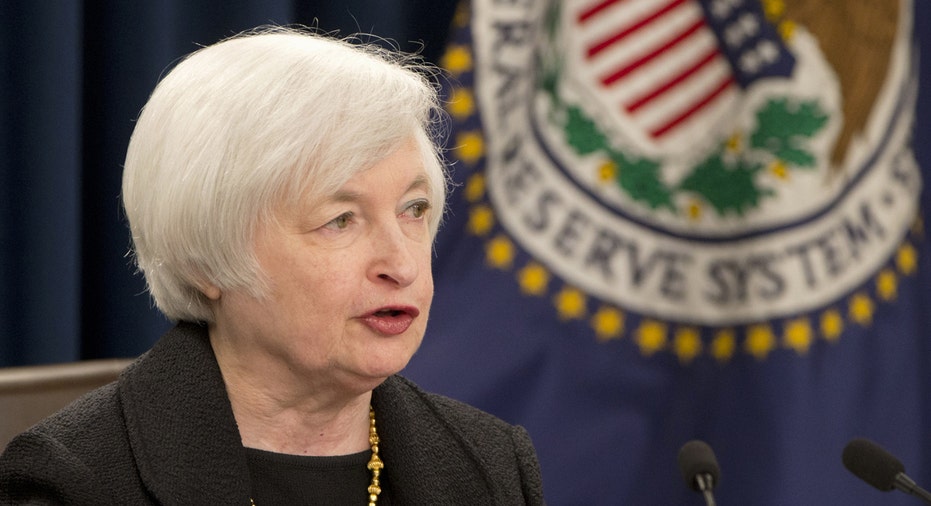FOMC Won't Raise Rates, But Might Signal When

There’s almost no chance the Federal Reserve will raise interest rates at their meeting this week. Nevertheless, the Fed’s statement will undoubtedly shed some light on when they will.
The policy-setting Federal Open Market Committee is scheduled to meet Tuesday and Wednesday and release its statement at 2 p.m. Wednesday at the conclusion of the meeting.
Significantly, Fed Chair Janet Yellen won’t be holding a press conference after this month’s meeting. There is widespread belief that the Fed won’t raise rates this week if for no other reason than because Yellen won’t have an opportunity to further explain the move at a post-meeting press conference.
The Fed meets once more this year in December and a press conference will follow that meeting. For that reason, many analysts believe the Fed will hold off on raising rates at least until December.
There are lots of other reasons the Fed probably won’t raise rates this week. Let’s start with weak wage growth.
In the past month since the Fed last met, central bankers had to digest quite a bit of new economic data, not least a disappointing jobs report that, most importantly, showed wages for most Americans aren’t moving higher despite a tightening jobs market. In September, average hourly wages fell by 1 cent.
Flatlining Wages
Since labor markets have (for the most part) performed well during the past year, as evidenced by strong monthly job creation and a rapidly falling headline unemployment rate, the Fed has set its focus on inflation, which has remained stubbornly below the central bank’s 2% target notwithstanding the improving jobs landscape.
In theory, a tightening job market should raise wages for workers, and higher wages should eventually translate into higher consumer prices, which would push inflation upwards toward the Fed’s 2% target. But that hasn’t happened.
Flatlining wages have vexed central bankers throughout 2015 and contributed to their reluctance to raise rates.
Meanwhile, concerns that Chinese economic growth may be stalling, a scenario that certainly won’t help already-low global commodity prices, haven’t abated since September. FOMC members cited potentially weak global growth and the market volatility that occurred in the wake of those reports over the summer as a primary reason for delaying in September.
None of that has changed.
What’s more, a first reading of third quarter GDP won’t be released until Thursday, a day too late for the Fed to consider. In any case, the number is expected to show that economic growth slowed last quarter from the prior quarter, which would only provide more reason for the Fed to hold off on a rate hike.
So Fed watchers will be closely parsing the FOMC statement for clues as to whether the Fed is leaning toward raising rates sooner or later.
Hawkish or Dovish Statement?
David Kelly, chief global strategist at J.P. Morgan Funds (NYSE:JPM), said investors are hoping the Fed will send a clear message one way or the other.
“Investors will want to look carefully at the Fed’s statement to see if it is, on balance, more hawkish or less so than the last one. When and if it finally does raise rates, the Federal Reserve will not want to surprise markets,” he said. “Thus, if it wants to leave the door open to a December tightening, it will want to pave the way by striking a more hawkish tone in its October statement.”
Kelly said if investors perceive a more hawkish tone in the October statement they’ll continue to prepare for a possible December liftoff. If the October statement leans toward the dovish, then a December rate hike is also unlikely and rates could stay at their current near-zero level for the foreseeable future.
The Fed is mulling the first rate hike in nine years, a move that would lift borrowing costs and make it more expensive for Americans to purchase big ticket items typically bought through financing agreements such as homes, cars and large appliances.
The Fed cut rates to a historic low of 0%-0.25% in December 2008 at the height of the financial crisis in an effort to stimulate borrowing and spur economic activity.
Central bankers have stressed repeatedly that when they do start raising rates they will do so gradually, probably at periodic intervals of 0.25% depending on incoming economic data.



















